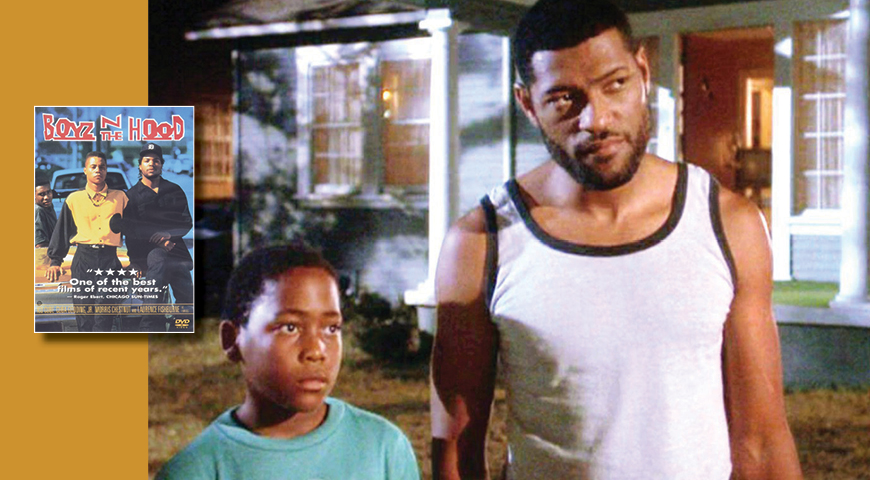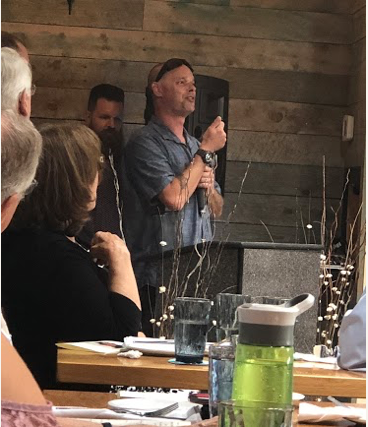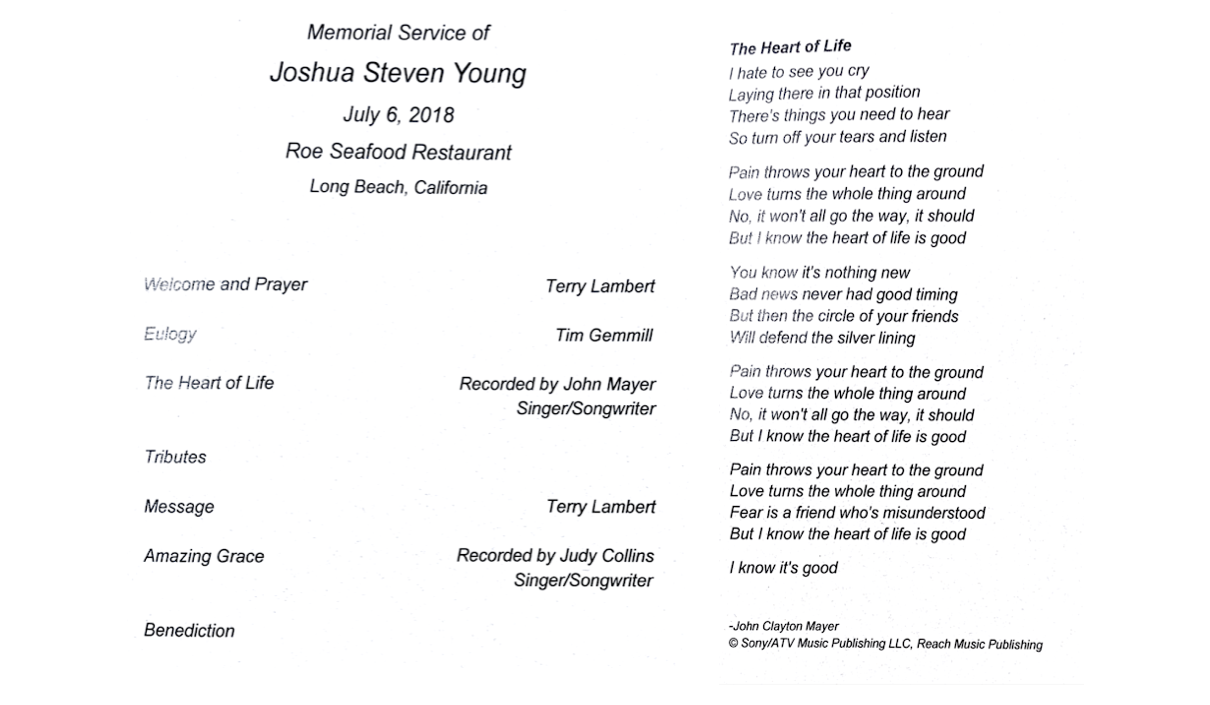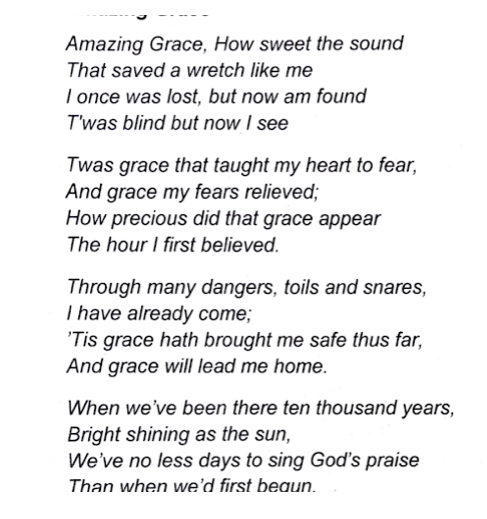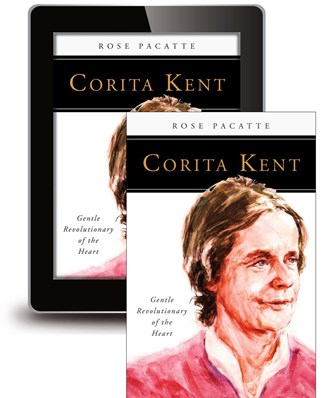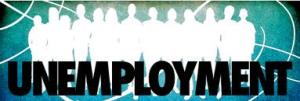Compiled and Curated by Rev. Scott D. Young
Biola Alumn (1975) & Adjunct Faculty (1998 – 2006)
Musing:
Fyodor Dostoyevsky from The Brothers Karamazov
Essay:
“These Fragments I Have Shored Against My Ruins”
by Mary Gordon
Musing:
Poem by Emily Dickinson
Essay:
“The Gift of Good Land”
by Wendell Berry
Musing:
Quotes by Jose Ortega y Gasset
Essay/Poem: “Instructions to Painters and Poets” by Lawrence Ferlinghetti
“Instead of giving a firm foundation
for setting the conscience of a man at rest forever.
Thou didst choose all that is exceptional, vague and enigmatic.”
As told by Ivan Karamazov in The Brothers Karamazov by Fyodor Dostoyevsky
“These Fragments I Have Shored Against My Ruins”
by Mary Gordon
Chapter selection from:
Reading Jesus: A Writer’s Encounter with the Gospels
I AM UNEASY CALLING MYSELF A PERSON OF FAITH, if faith is seen as a synonym for certainty, or even an unwavering trust in what I know, I cannot recognize in myself an essential stability that quickly rights itself after the occasional brief faltering or stumble. Many days, there seems no possibility that there is any kind of reality corresponding to or behind the word “God.” I know that I have often been mistaken, often proven wrong, including and especially about matters that I would once have called “articles of faith,” matters that I once believed I had to believe under pain of damnation, an eternity in a hell I took to be literal and real. I am ready, therefore, at any time to learn that almost everything and anything I know is wrong, or at least in need of radical revision.
And yet I could never say of myself, “I am not a person of faith,” because I know that I am different from people who do not have a religious imagination. I am drawn to a sense of ultimate meaningfulness, even though I can only apprehend it dimly; a figure in a mist, a shape on the horizon. That shape, that figure, embodies itself in a person, Jesus, whom I came to know through the words of the Gospel.
The elusiveness of the figure, its essential ungraspableness, leads me to the understanding that the kind of person of faith I am is a person of hopeful faith. Hope is the vector that pulls one toward the incomprehensible. And yet the ungraspable, the incomprehensible, is nevertheless rooted in profound attachments, I feel this attachment when I am praying in a place with others, possibly radically different from me in race, class, education, background…. all of us saying the same words, the same words that people have said for a thousand years.
My faith, grounded in attachments and fueled by hope, whose symbol is a flaming heart, is mobile, motile, with the mobility and the motility corresponding to the age in which I was born. Yet I am not unrooted What keeps me from flying off or apart? Why do I know myself with a particular clarity as a person of faith when I read a best selling attack on the idea of God, an attack that seems vulgarly ahistorical, intellectually crude? Why do I resist as insufficient the postmodern ironic default setting whose favorite form is parody, and whose preferred task is unmasking? It is clear to me that I prefer the risky, question found in Eliot’s The Waste Land: “What are the roots that clutch, what branches grow / out of this stony rubbish? Son of man, / you cannot say, or guess, for you know only / a heap of broken images”
For one thing the terms are more resonant; for another, more would seem to be at stake. It is nearly a hundred years since Eliot wrote those words, and the passage of time makes the word “only” seem less crucial. A heap of broken images seems like quite a precious cargo, quite a desirable patrimony. A place to stand. A place to which one can become attached.
And so, as I said, I am a person of attachment. My attachments are not to a set of ideas but to a series of images and tones. Images and tones that resonate, like the tone of a foghorn or the lighthouse beam, indicating something, suggesting something, a something apprehended not early by the mind, as if they were a series of directions to be followed, but by the animal’s directed sense.
Image. Tone. Gesture. Phrase. Scene. Fragments.
…
“THESE FRAGMENTS I have shored against my ruins.” These words from Eliot’s Waste Land involved me in an interesting misreading that went on for several decades. I had habitually misread the plural “ruins” as the singular “ruin.” I was shocked to find out what I had done, and not pleased with Eliot’s words: I preferred my own invention. I had interpreted the line to mean that the words were a preservation against personal ruin. But “ruins” suggests a public spectacle – like the Parthenon or the Acropolis- and what would be the point of shoring fragments against these colossal wrecks? Such an act becomes an act of witness rather than of self-preservation.
But whatever Eliot meant or I understood, I came to know Jesus in fragments. Not Jesus, whom I would never have called Jesus (that was for Protestants, with their impulse to soften or democratize), but Christ. Before this enterprise of reading the Gospels straight through, beginning to end, Matthew to John, my understanding of them, therefore of their subject, Jesus, came to me in fragments. Fragments that I heard—the Gospel read by the priest from the altar at Mass (during my childhood the only English words I would have heard in the course of the Mass prayers)-then read, as I followed the priest’s voice in the missal I was given for my eighth birthday.
Alongside the words, though, there were visual imagers, part of my life from earliest memory. Images on the walls of the house I lived in, the houses of everyone I knew. Pictures in books, read to me as I sat on my father’s lap, later the subject of my first experience of reading. But, in the Catholic world of the triumphalist fifties, sacred images were popularized, commercialized: we had puzzles, coloring books, sticker books, pencil cases, lunch boxes, dish towels, saltcellars, dinner plates. We colored the sacred, ate off it, dried our dishes with it, carried it in our purses and our book bags, reached for it at lunch or at our desks.
But these sacred images don’t restrict themselves to the ones absorbed in childhood. Along with my childhood puzzle of Jesus and the children is Bellini’s risen Christ, and Fra Angelico’s, Dostoyevski’s tempted Jesus and Pasolini’s enraged reformer. Not only my life but the life of a culture, the history of a civilization. Called Christian.
After Jesus Christ.
. . .
AND SO, if no reading is innocent, how singularly un-innocent is my reacting of the Gospels? I bring to it, simply, my life, Information, misinformation, garblings, elisions, words that told me who I was and others that made me know what I would never be.
Where to begin such a reading? Perhaps with the memory, the image, that seems to have been with me before memory can fix a time.
The Prodigal Son.
I Dwell in Possibility – (466)
by Emily Dickinson
I dwell in Possibility –
A fairer House than Prose – More numerous of Windows – Superior – for Doors –
Of Chambers as the Cedars – Impregnable of eye –
And for an everlasting Roof
The Gambrels of the Sky –
Of Visitors – the fairest – For Occupation – This –
The spreading wide my narrow Hands
To gather Paradise –
“The Gift of Good Land”
by Wendall Berry
Chapter selection from:
The Gift of Good Land: Further Essays Cultural and Agricultural
“Dream not of other Worlds….” Paradise Lost VIII, 175
My purpose here is double. I want, first to attempt a Biblical argument for ecological and agricultural responsibility. Second, I want to examine some of the practical implications of such an argument. I am prompted to the first of these tasks partly because of its importance in our unresolved conflict about how we should use the world. That those who affirm the divinity of the Creator should come to the rescue of His creature is a logical consistency of great potential force.
The second task is obviously related to the first, but my motive here is somewhat more personal. I wish to deal directly at last with my own long held belief that Christianity, as usually presented by its organizations, is not earthly enough—that valid spiritual life, in this world, must have a practice and a practicality—it must have a material result. (I am well aware that in this belief I am not alone.) What I shall be working toward is some sort of practical understanding of what Arthur O. Lovejoy called the “this-worldly” aspect of Biblical thought. I want to see if there is not at least implicit in the Judeo-Christian heritage a doctrine such as that the Buddhists call “right livelihood” or “right occupation.”
Some of the reluctance to make a forthright Biblical argument against the industrial rape of the natural world seems to come from the suspicion that this rape originates with the Bible, that Christianity cannot cure what, in effect, it has caused. Judging from conversations I have had, the best known spokesman for this view is Professor Lynn White, Jr., whose essay, “The Historical Roots of Our Ecologic Crisis” has been widely published.
Professor White asserts that it is a “Christian axiom that nature has no reason for existence save to serve man.” He seems to base his argument on one Biblical passage, Genesis 1:28, in which Adam and Eve are instructed to “subdue” the earth. “Man,” says Professor White, “named all the animals, thus establishing his dominance over them.” There is no doubt that Adam’s superiority over the rest of Creation was represented, if not established, by this act of naming; he was given dominance. But that this dominance was meant to be tyrannical, or that “subdue” meant to destroy, is by no means a necessary inference. Indeed, it might be argued that the correct understanding of this “dominance” is given in Genesis 2:15, which says that Adam and Eve were put into the Garden “to dress it and to keep it.”
But these early verses of Genesis can give us only limited help. The instruction in Genesis
1:28 was, after all, given to Adam and Eve in the time of their innocence, and it seems certain that the word “subdue” would have had a different intent and sense for them at that time than it could have for them, or for us, after the Fall.
It is tempting to quarrel at length with various statements in Professor White’s essay, but he has made that unnecessary by giving us two sentences that define both his problem and my task. He writes, first, that “God planned all of this [the Creation] explicitly for man’s benefit and rule: no item in the physical creation had any purpose save to serve man’s purposes.” And a few sentences later he says: “Christianity insisted that it is God’s will that man exploit nature for his proper ends” [My emphasis].
It is certainly possible that there might be a critical difference between “man’s purposes” and “man’s proper ends.” And one’s belief or disbelief in that difference, and one’s seriousness about the issue of propriety, will tell a great deal about one’s understanding of the Judeo-Christian tradition.
I do not mean to imply that I see no involvement between that tradition and the abuse of nature. I know very well that Christians have not only been often indifferent to such abuse, but have often condoned it and often perpetrated it. That is not the issue. The issue is whether or not the Bible explicitly or implicitly defines a proper human use of Creation or the natural world. Proper use, as opposed to improper use, or abuse, is a matter of great complexity, and to find it adequately treated it is necessary to turn to a more complex story than that of Adam and Eve.
The story of the giving of the Promised Land to the Israelites is more serviceable than the story of the giving of the Garden of Eden, because the Promised Land is a divine gift to a fallen people. For that reason the giving is more problematical, and the receiving is more conditional and more difficult. In the Bible’s long working out of the understanding of this gift, we may find the beginning—and, by implication, the end—of the definition of an ecological discipline.
The effort to make sense of this story involves considerable difficulty because the tribes of Israel, though they see the Promised Land as a gift to them from God, are also obliged to take it by force from its established inhabitants. And so a lot of the “divine sanction” by which they act sounds like the sort of rationalization that invariably accompanies nationalist aggression and theft. It is impossible to ignore the similarities to the westward movement of the American frontier. The Israelites were following their own doctrine of “manifest destiny,” which for them, as for us, disallowed any human standing to their opponents. In Canaan, as in America, the conquerors acted upon the broadest possible definition of idolatry and the narrowest possible definition of justice. They conquered with the same ferocity and with the same genocidal intent.
But for all these similarities, there is a significant difference. Whereas the greed and violence of the American frontier produced an ethic of greed and violence that justified American industrialization, the ferocity of the conquest of Canaan was accompanied from the beginning by the working out of an ethical system antithetical to it—and antithetical, for that matter, to the American conquest with which I have compared it. The difficulty but also the wonder of the story of the Promised Land is that, there, the primordial and still continuing dark story of human rapaciousness begins to be accompanied by a vein of light which, however improbably and uncertainly, still accompanies us. This light originates in the idea of the land as a gift—not a free or a deserved gift, but a gift given upon certain rigorous conditions.
It is a gift because the people who are to possess it did not create it. It is accompanied by careful warnings and demonstrations of the folly of saying that “My power and the might of mine hand hath gotten me this wealth” (Deuteronomy 8:17). Thus, deeply implicated in the very definition of this gift is a specific warning against hubris which is the great ecological sin, just as it is the great sin of politics. People are not gods. They must not act like gods or assume godly authority. If they do, terrible retributions are in store. In this warning we have the root of the idea of propriety, of proper human purposes and ends. We must not use the world as though we created it ourselves.
The Promised Land is not a permanent gift. It is “given,” but only for a time, and only for so long as it is properly used. It is stated unequivocally, and repeated again and again, that “the heaven and the heaven of heavens is the Lord’s thy God, the earth also, with all that therein is” (Deuteronomy 10:14). What is given is not ownership, but a sort of tenancy, the right of habitation and use: “The land shall not be sold forever: for the land is mine; for ye are strangers and sojourners with me” (Leviticus 25:23).
In token of His landlordship, God required a sabbath for the land, which was to be left fallow every seventh year; and a sabbath of sabbaths every fiftieth year, a “year of jubilee,” during which not only would the fields lie fallow, but the land would be returned to its original owners, as if to free it of the taint of trade and the conceit of human ownership. But beyond their agricultural and social intent, these sabbaths ritualize an observance of the limits of “my power and the might of mine hand”—the limits of human control. Looking at their fallowed fields, the people are to be reminded that the land is theirs only by gift; it exists in its own right, and does not begin or end with any human purpose.
The Promised Land, moreover, is “a land which the Lord thy God careth for: the eyes of the Lord thy God are always upon it” (Deuteronomy 11:12). And this care promises a repossession by the true landlord, and a fulfillment not in the power of its human inhabitants: “as truly as I live, all the earth shall be filled with the glory of the Lord” (Numbers 14:21)—a promise recalled by St. Paul in Romans 8:21: “the creature [the Creation] itself also shall be delivered from the bondage of corruption into the glorious liberty of the children of God.”
Finally, and most difficult, the good land is not given as a reward. It is made clear that the people chosen for this gift do not deserve it, for they are “a stiff-necked people” who have been wicked and faithless. To such a people such a gift can be given only as a moral predicament: having failed to deserve it beforehand, they must prove worthy of it afterwards; they must use it well, or they will not continue long in it.
How are they to prove worthy?
First of all, they must be faithful, grateful, and humble; they must remember that the land is a gift: “When thou hast eaten and art full, then thou shalt bless the Lord thy God for the good land which he hath given thee” (Deuteronomy 8:10).
Second, they must be neighborly. They must be just, kind to one another, generous to strangers, honest in trading, etc. These are social virtues, but, as they invariably do, they have ecological and agricultural implications. For the land is described as an “inheritance”; the community is understood to exist not just in space, but also in time. One lives in the neighborhood, not just of those who now live “next door,” but of the dead who have bequeathed the land to the living, and of the unborn to whom the living will in turn bequeath it. But we can have no direct behavioral connection to those who are not yet alive. The only neighborly thing we can do for them is to preserve their inheritance: we must take care, among other things, of the land, which is never a possession, but an inheritance to the living, as it will be to the unborn.
And so the third thing the possessors of the land must do to be worthy of it is to practice good husbandry. The story of the Promised Land has a good deal to say on this subject, and yet its account is rather fragmentary. We must depend heavily on implication. For sake of brevity, let us consider just two verses (Deuteronomy 22:6-7):
If a bird’s nest chance to be before thee in the way in any tree, Or on the ground, whether they be young ones, or eggs, and the Dam sitting upon the young, or upon the eggs, thou shalt not Take the dam with the young:
But thou shalt in any wise let the dam go, and take the young to
thee; that it may be well with thee, and that thou mayest prolong they days.
This, obviously, is a perfect paradigm of ecological and agricultural discipline, in which the idea of inheritance is necessarily paramount. The inflexible rule is that the source must be preserved. You may take the young, but you must save the breeding stock. You may eat the harvest, but you must save seed, and you must preserve the fertility of the fields.
What we are talking about is an elaborate understanding of charity. It is so elaborate because of the perception, implicit here, explicit in the New Testament, that charity by its nature cannot be selective—that it is, so to speak, out of human control. It cannot be selective because between any two humans, or any two creatures, all Creation exists as a bond. Charity cannot be just human, any more than it can be just Jewish or just Samaritan. Once begun, wherever it begins, it cannot stop until it includes all Creation, for all creatures are parts of a whole upon which each is dependent, and it is a contradiction to love your neighbor and despise the great inheritance on which his life depends. Charity even for one person does not make sense except in terms of an effort to love all Creation in response to the Creator’s love for it.
And how is this charity answerable to “man’s purposes”? It is not, any more than the Creation itself is. Professor White’s contention that the Bible proposes any such thing is, so far as I can see, simply wrong. It is not allowable to love the Creation according to the purposes one has for it, any more than it is allowable to love one’s neighbor in order to borrow his tools. The wild ass and the unicorn are said in the Book of Job (39:5-12) to be “free,” precisely in the sense that they are not subject or serviceable to human purposes. The same point—though it is not the main point of that passage—is made in the Sermon on the Mount in reference to “the fowls of the air” and “the lilies of the field.” Faced with this problem in Book VIII of Paradise Lost, Milton scrupulously observes the same reticence. Adam asks about “celestial Motions,” and Raphael refuses to explain, making the ultimate mysteriousness of Creation a test of intellectual propriety and humility:
…. For the Heav’n’s wide Circuit, let it speak
The Maker’s high magnificence, who built
So spacious, and his Line stretcht out so far; That Man may know he dwells not in his own; An Edifice too large for hi to fill,
Lodg’d in a small partition, and the rest
Ordain’d for uses to his Lord best known. (lines 100-106)
The Creator’s love for the Creation is mysterious precisely because it does not conform to human purposes. The wild ass and the wild lilies are loved by God for their own sake and yet they are part of a pattern that we must love because it includes us. This is a pattern that humans can understand well enough to respect and preserve, though they cannot “control” it or hope to understand it completely. The mysterious and the practical, the Heavenly and the earthly, are thus joined. Charity is a theological virtue and is prompted, no doubt, by a theological emotion, but it is also a practical virtue because it must be practiced. The requirements of this complex charity cannot be fulfilled by smiling in abstract beneficence on our neighbors and on the scenery. It must come to acts, which must come from skills. Real charity calls for the study of agriculture, soil husbandry, engineering, architecture, mining, manufacturing, transportation, the making of monuments and pictures, songs and stories. It calls not just for skills but for the study and criticism of skills, because in all of them a choice must be made: they can be used either charitably or uncharitably.
How can you love your neighbor if you don’t know how to build or mend a fence, how to keep your filth out of his water supply and your poison out of his air; or if you do not produce anything and so have nothing to offer, or do not take care of yourself and so become a burden? How can you be a neighbor without applying principle—without bringing virtue to a practical issue? How will you practice virtue without skill?
The ability to be good is not the ability to do nothing. It is not negative or passive. It is the ability to do something well—to do good work for good reasons. In order to be good you have to know how—and this knowing is vast, complex, humble and humbling; it is of the mind and of the hands, of neither alone.
The divine mandate to use the world justly and charitably, then, defines every person’s moral predicament as that of a steward. But this predicament is hopeless and meaningless unless it produces an appropriate discipline: stewardship. And stewardship is hopeless and meaningless unless it involves long-term courage, perseverance, devotion, and skill. This skill is not to be confused with any accomplishment or grace of spirit or of intellect. It has to do with everyday proprieties in the practical use and care of created things—with “right livelihood.”
If “the earth is the Lord’s” and we are His stewards, then obviously some livelihoods are “right” and some are not. Is there, for instance, any such thing as a Christian strip mine? A Christian atomic bomb? A Christian nuclear power plant or radioactive waste dump? What might be the design of a Christian transportation or sewer system? Does not Christianity imply limitations on the scale of technology, architecture, and land holding? Is it Christian to profit or otherwise benefit from violence? Is there not, in Christian ethics, an implied requirement of practical separation from a destructive or wasteful economy? Do not Christian values require the enactment of a distinction between an organization and a community?
It is impossible to understand, much less to answer, such questions except in reference to issues of practical skill, because they all have to do with distinctions between kinds of action. These questions, moreover, are intransigently personal, for they ask, ultimately, how each livelihood and each life will be taken from the world, and what each will cost in terms of the livelihoods and lives of others. Organizations and even communities cannot hope to answer such questions until individuals have begun to answer them.
But here we must acknowledge one inadequacy of Judeo-Christian tradition. At least in its most prominent and best known examples, this tradition does not provide us with a precise enough understanding of the commonplace issues of livelihood. There are two reasons for this.
One is the “otherworldly philosophy” that, according to Lovejoy, “has, in one form or another, been the dominant official philosophy of the larger part of civilized mankind through most of its history. … The greater numbers of the subtler speculative minds and of the great religious teachers have…been engaged in weaning man’s thought or his affections, or both, from…Nature.” The connection here is plain.
The second reason is that the Judeo-Christian tradition as we have it in its art and literature, including the Bible, is so strongly heroic. The poets and storytellers in this tradition have tended to be interested in the extraordinary actions of “great men”—actions unique in grandeur, such as may occur only once in the history of the world. These extraordinary actions do indeed bear a universal significance, but they cannot very well serve as examples of ordinary behavior. Ordinary behavior belongs to a different dramatic mode, a different understanding of action, even a different understanding of virtue. The drama of heroism raises above all the issue of physical and moral courage: Does the hero have, in extreme circumstances, the courage to obey—to perform the task, the sacrifice, the resistance, the pilgrimage that he is called on to perform? The drama of ordinary or daily behavior also raises the issue of courage, but it raises at the same time the issue of skill; and, because ordinary behavior lasts so much longer than heroic action, it raises in a more complex and difficult way the issue of perseverance. It may, in some ways, be easier to be Samson than to be a good husband or wife day after day for fifty years.
These heroic works are meant to be (among other things) instructive and inspiring to ordinary people in ordinary life, and they are, grandly and deeply so. But there are two issues that they are prohibited by their nature from raising: the issue of life-long devotion and perseverance in unheroic tasks, and the issue of good workmanship or “right livelihood.”
It can be argued, I believe, that until fairly recently there was simply no need for attention to such issues, for there existed yeoman or peasant and artisan classes: these were the people who did the work of feeding and clothing and housing, and who were responsible for the necessary skills, disciplines, and restraints. As long as those earth-keeping classes and their traditions were strong, there was at least the hope that the world would be well used. But probably the most revolutionary accomplishment of the industrial revolution was to destroy the traditional livelihoods and so break down the cultural lineage of those classes.
The industrial revolution has held in contempt not only the “obsolete skills” of those classes, but the concern for quality, for responsible workmanship and good work, that supported their skills. For the principle of good work it substituted a secularized version of the heroic tradition: the ambition to be a “pioneer” of science or technology, to make a “breakthrough” that will “save the world” from some “crisis” (which now is usually the result of some previous “breakthrough”).
The best example we have of this kind of hero, I am afraid, is the fallen Satan of Paradise Lost—Milton undoubtedly having observed in his time the prototypes of industrial heroism. This is a hero who instigates and influences the actions of others, but does not act himself. His heroism is of the mind only—escaped as far as possible, not only from divine rule, from its place in the order of creation or the Chain of Being, but also from the influence of material creation:
A mind not to be chang’d by Place or Time. The mind is its own place, and in itself
Can make a heav’n of Hell, a Hell of Heav’n.
(Book I, lines 253-255)
This would-be heroism is guilty of two evils that are prerequisite to its very identity: hubris and abstraction. The industrial hero supposes that “mine own mind hath saved me”—and moreover that it may save the world. Implicit in this is the assumption that one’s mind is one’s own, and that it may choose its own place in the order of things; one usurps divine authority, and thus, in classic style, becomes the author of results that one can neither foresee or control.
And because this mind is understood only as a cause, its primary works are necessarily abstract. We should remind ourselves that materialism in the sense of the love of material things is not in itself an evil. As C.S. Lewis pointed out, God too loves material things; He invented them. The Devil’s work is abstraction—not the love of material things, but the love of their quantities—which, of course, is why “David’s heart smote him after that he had numbered the people” (II Samuel 24:10). It is not the lover of material things but the abstractionist who defends long-term damage for short-term gain, or who calculates the “acceptability” of industrial damage to ecological or human health, or who counts dead bodies on the battlefield. The true lover of material things does not think in this way, but is answerable instead to the paradox of the lost sheep: that each is more precious than all.
But perhaps we cannot understand this secular heroic mind until we understand its opposite: the mind obedient and in place. And for that we can look again at Raphael’s warning in Book VIII of Paradise Lost:
… apt the Mind or Fancy is to rove
Uncheckt, and of her roving is no end;
Till warn’d, or by experience taught, she learn That not to know at large of things remote From use, obscure and subtle, but to know That which before us lies in daily life,
Or emptiness, or fond impertinence,
And renders us in things that most concern Unpractic’d, unprepar’d, and still to seek. Therefore from this high pitch let us descend A lower flight, and speak of things at hand
Useful …
(lines 188-200)
In its immediate sense this is a warning against thought that is theoretical or speculative (and therefore abstract), but in its broader sense it is a warning against disobedience— the eating of the forbidden fruit, an act of hubris, which Satan justifies by a compellingly reasonable theory and which Eve undertakes as a speculation.
A typical example of the conduct of industrial heroism is to be found in the present rush of experts to “solve the problem of world hunger”—which is rarely defined except as a “world problem” known, in industrial heroic jargon, as “the world food problematique.” As is characteristic of industrial heroism, the professed intention here is entirely salutary: nobody should starve. The trouble is that “world hunger” is not a problem that can be solved by a “world solution.” Except in a very limited sense, it is not an industrial problem, and industrial attempts to solve it—such as the “Green Revolution” and “Food for Peace”—have often had grotesque and destructive results. “The problem of world hunger” cannot be solved until it is understood and dealt with by local people as a multitude of local problems of ecology, agriculture, and culture.
The most necessary thing in agriculture, for instance, is not to invent new technologies or methods, not to achieve “breakthroughs,” but to determine what tools and methods are appropriate to specific people, places, and needs, and to apply them correctly. Application (which the heroic approach ignores) is the crux, because no two farms or farmers are alike; no two fields are alike. Just the changing shape or topography of the land makes for differences of the most formidable kind. Abstractions never cross these boundaries without either ceasing to be abstractions or doing damage. And prefabricated industrial methods and technologies are abstractions. The bigger and more expensive, the more heroic, they are, the harder they are to apply considerately and conservingly.
Application is the most important work, but also the most modest, complex, difficult, and long—and so it goes against the grain of industrial heroism. It destroys forever the notions that the world can be thought of (by humans) as a whole and that humans can “save” it as a whole—notions we can well do without, for they prevent us from understanding our problems and from growing up.
To use knowledge and tools in a particular place with good long-term results is not heroic. It is not a grand action visible for a long distance or a long time. It is a small action, but more complex and difficult, more skillful and responsible, more whole and enduring, than most grand actions. It comes of a willingness to devote oneself to work that perhaps only the eye of Heaven will see in its full intricacy and excellence. Perhaps the real work, like real prayer and real charity, must be done in secret.
The great study of stewardship, then, is “to know/That which before us lies in daily life” and to talk about skill. In the loss of skill we lose stewardship; in losing stewardship we lose fellowship; we become outcasts from the great neighborhood of Creation. It is possible—as our experience in this good land shows—to exile ourselves from Creation, and to ally ourselves with the principle of destruction—which is, ultimately, the principle of nonentity. It is to be willing in general for beings to not-be. And once we have allied ourselves with that principle, we are foolish to think that we can control the results. The “regulation” of abominations is a modern governmental exercise that never succeeds. If we are willing to pollute the air—to harm the elegant creature known as the atmosphere— by that token we are willing to harm all creatures that breathe, ourselves and our children among them. There is no begging off or “trading off.” You cannot affirm the power plant and condemn the smokestack, or affirm the smoke and condemn the cough.
That is not to suggest that we can live harmlessly, or strictly at our own expense; we depend upon other creatures and survive by their deaths. To live, we must daily break the body and shed the blood of Creation. When we do this knowingly, lovingly, skillfully, reverently, it is a sacrament. When we do it ignorantly, greedily, clumsily, destructively, it is a desecration. In such desecration we condemn ourselves to spiritual and moral loneliness, and others to want.
Man does not have a nature, but a history…. Man is no thing, but a drama…His life is something that has to be chosen, made up as he goes along, and a man consists in that choice and invention. Each man is the novelist of himself, and though he may choose between being an original writer and a plagiarist, he cannot escape choosing…. He is condemned to be free…. Freedom is not an activity exercised by an entity that already possessed a fixed being before and apart from that activity. Being free means…. being able to be something else than what one is and not being able to settle down once and for all in any determined nature….
Unlike all other things in the universe which have a pre-fixed being given to them, man is the only and almost inconceivable reality that exists without having an irrevocably pre-fixed being….
It is not only in economics but also in metaphysics that man must earn his living (win his life).
Quotes by Jose Ortega y Gasset
Excerpts from History as a System / Man Has No Nature
Instructions to Painters & Poets
by Lawrence Ferlinghetti from How to Paint Sunlight
I asked a hundred painters and a hundred poets how to paint sunlight
on the face of life
Their answers were ambiguous and ingenuous as if they were all guarding trade secrets Whereas it seems to me
all you have to do
is conceive of the whole world and all humanity
as a kind of art work
a site-specific art work
an art project of the god of light the whole earth and all that’s in it to be painted with light
And the first thing you have to do is paint out postmodern painting
And the next thing is to paint yourself in your true colors
in primary colors as you seem them (without whitewash)
paint yourself as you see yourself
without make-up without masks
Then paint your favorite people and animals with your brush loaded with light
And be sure you get the perspective right
and don’t fake it
because one false line leads to another
And then paint the high hills when the sun first strikes them on an autumn morning
With your palette knife lay it on
the cadmium yellow leaves the ochre leaves
the vermillion leaves
of a New England autumn
And paint the ghost light of summer nights and the light of the midnight sun
which is moon light
And don’t paint out the shadows made by light
for without chiaroscuro you’ll have shallow pictures
So paint all the dark corners too everywhere in the world
all the hidden places and minds and hearts which light never reaches
all the caves of ignorance and fear the pits of despair
the sloughs of despond and write plain upon them
“Abandon all despair, ye who enter here”
And don’t forget to paint
all those who lived their lives as bearers of light
Paint their eyes
and the eyes of every animal
and the eyes of beautiful women
known best for the perfection of their breasts and the eyes of men and women
known only for the light of their minds
Paint the light of their eyes the light of sunlit laughter the song of eyes
the song of birds in flight
And remember that the light is within if it is anywhere
and you must paint from the inside
Start with purity with pure white
the pure white of gesso
the pure white of cadmium white the pure white of flake white
the pure virgin canvas
the pure life we all begin with
Turner painted sunlight with egg tempera
(which proved unstable)
and Van Gogh did it with madness and the blood of his ear
(also unstable)
and the Impressionists did it by never using black
and the Abstract Expressionists did it with white house paint
But you can do it with the pure pigment
(if you can figure out the formula)
of your own true light
But before you strike the first blow on the virgin canvas
remember its fragility life’s extreme fragility
and remember its innocence its original innocence
before you strike the first blow
Or perhaps never strike it
And let the light come through the inner light of the canvas
the inner light of the models posed in the life study
the inner light of everyone
Let it all come through like a pentimento
the light that’s been painted over
the life that’s been painted over so many times
Let it all surge to the surface the painted-over image
of primal life on earth
And when you’ve finished your painting stand back astonished
stand back and observe
the life on earth that you’ve created the lighted life on earth
that you’ve created a new brave world




